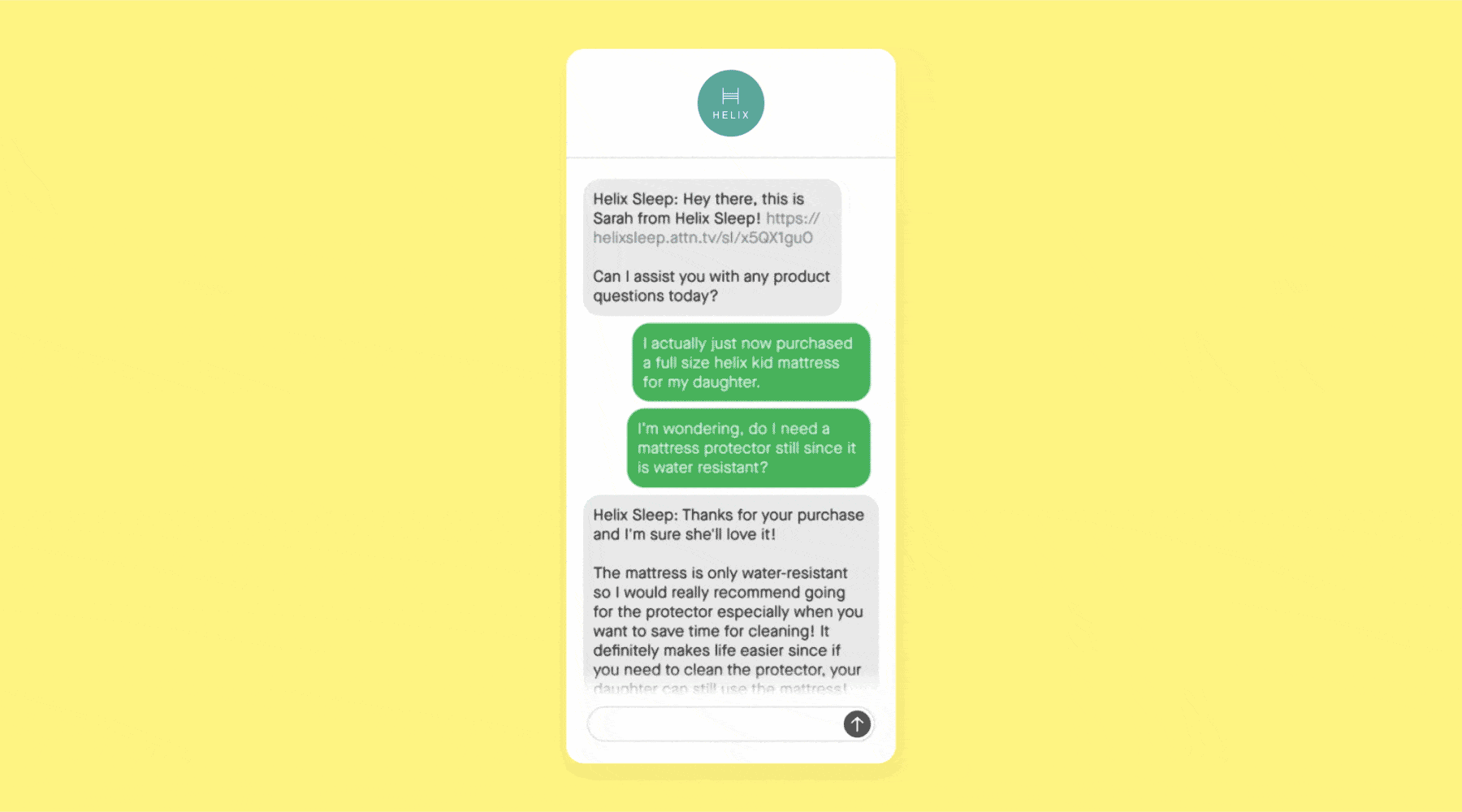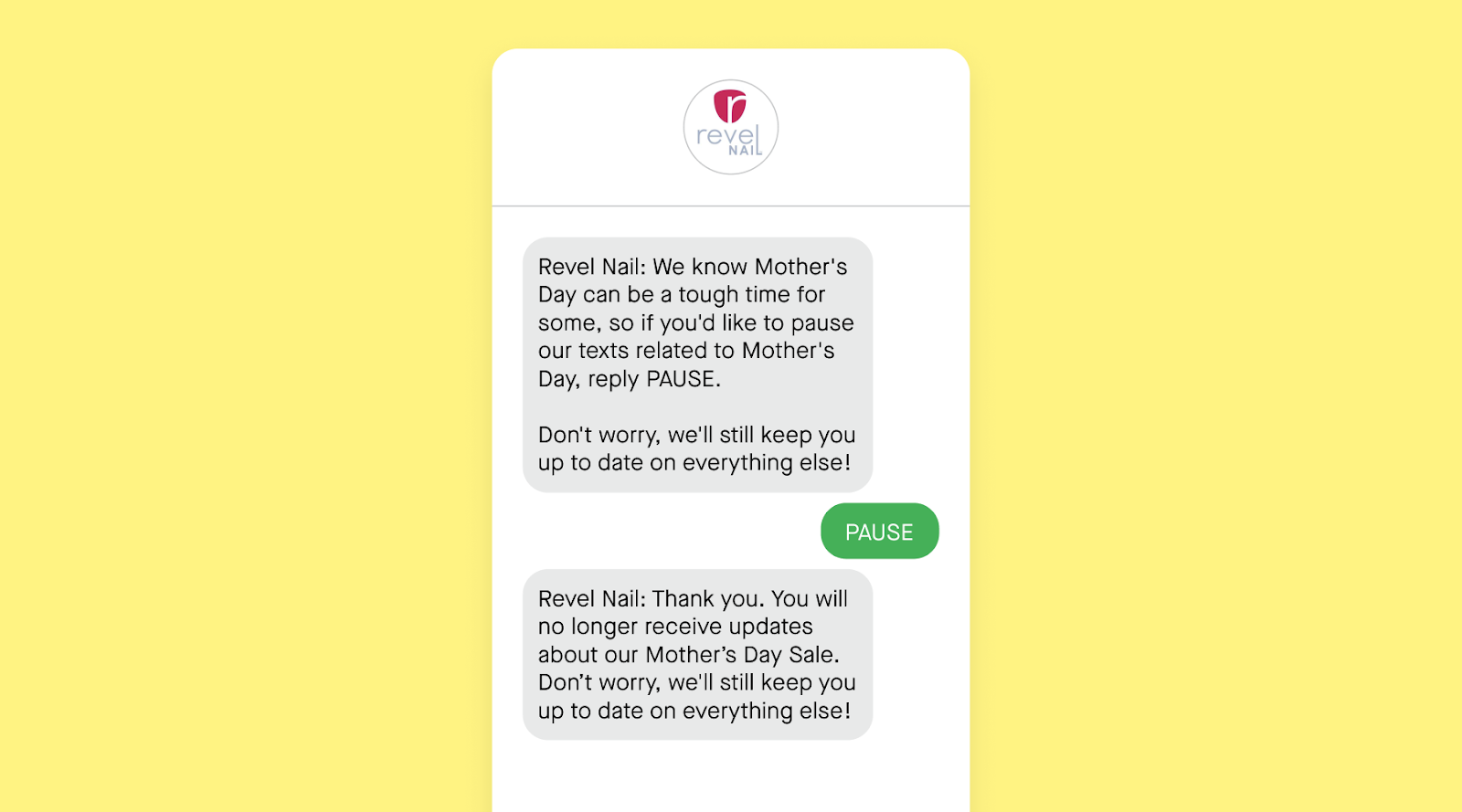Not every marketing moment has to be about a promotion. Explore ways to diversify your SMS content strategy beyond discounts.
As consumers, we may associate marketing messages with limited-time discounts, sales, and other money-saving offers. But for brands who don’t typically discount—or want to send different types of updates to subscribers—there’s plenty of other text messaging content that builds brand loyalty and drives revenue.
Non-promotional text messages include any campaign or triggered strategy that engages subscribers without needing to highlight product discounts or sales. Here are ten examples of non-promotional content to build your brand community:
1. Product drops or launches

Text messaging is an engaging and instantaneous way to reach customers, especially when announcing new or limited-edition products. By giving SMS subscribers the first look at a new product, you’re creating a sense of exclusivity while driving mobile revenue.
Lean into the VIP nature of these announcements with limited-time messaging, like “just arrived” and “while it lasts.” Including multi-media like GIFs allows you to tease different styles or a full collection at once.
Sending your highly-engaged SMS audience a new or limited-edition product announcement is a highly effective way to build anticipation before, during, and after a launch.
2. Complimentary shipping

Last year, consumers said free shipping was the number one factor influencing where they choose to shop online. Go beyond the standard “percentage-off” discount in your brand’s sign-up strategy by offering free shipping.
You can use this timely perk with Attentive’s 2-in-1 sign-up units to grow your email and text messaging lists while providing value—free shipping—in return.
Also, try offering free shipping in your triggered cart abandonment message to encourage high-intent subscribers to complete their purchase.
3. 1:1 customer service

Subscribers in the final steps of making a purchase may be looking for personalized answers to questions about the product they’re interested in. Attentive Concierge™ provides this 1:1 support for each subscriber with human-powered messaging.
Prompt your subscribers to ask questions by adding Attentive Concierge to your abandoned cart flow. You can also let them know in your welcome message that they can text you any time with product questions, gift recommendations, order status updates, and more.
These two-way touchpoints drive conversions with high-intent subscribers while providing the 1:1 support customers want so you can meet and exceed their expectations.
4. Loyalty/VIP program perks

Your highly engaged SMS subscribers are the perfect audience to promote your brand’s loyalty program and members-only perks.
Build excitement around your program by teasing some of its exclusive offers within your message and image. These campaigns can attract and retain members, while increasing your loyalty KPIs—like participation rates, site visits, app downloads, and order frequency.
Don’t have a loyalty program? Treat your text messaging channel like your VIP audience. Try creating a dynamic segment with frequent purchasers, and reward their engagement with non-promotional incentives like early access. This high-intent segment will appreciate the exclusive treatment and may be more likely to purchase again.
5. Questions about preferences/interests

Support common customer questions and barriers to purchase with personalized content recommendations. Using conversational tools like Two-Way Journeys™ allows you to customize the support experience, sending products and tips based on the preferences subscribers reply with.
For example, if you’re an apparel brand, ask your subscribers for their seasonal plans (i.e. vacation mode, wedding season, working from home). Then, send a link to a recommended clothing piece based on their response with an included image for styling inspiration.
Educate and empower your audience to take advantage of your products by sending non-promotional content like blog posts, lookbooks, and recipes. Your brand can also use this zero-party data for any campaign by assigning custom attributes based on subscriber preferences.
6. Geo-targeted invitations

Deliver a relevant SMS experience to each subscriber by using geo-targeting in your location-based offers. This personalized strategy uses geographic data to share new offers or services available in subscribers’ local areas, creating a more relevant SMS experience.
For example, food and beverage brands can alert nearby subscribers when free delivery is available, or a new location has opened. This strategy makes sure you’re sending highly targeted messages to the most relevant subscribers, while avoiding messaging those who your offer may not apply to.
Any type of brand can create geo-targeted segments based on subscribers’ locations to use when announcing events, pop-ups, and new store locations.
7. Back-in-stock alerts

Your engaged SMS audience wants to be the first to know when their favorite products are restocked. Including back-in-stock reminders in your SMS strategy engages high-intent subscribers who’ve browsed items that were previously sold out.
Encourage this relevant subscriber segment to instantly shop with a direct link to the in-demand product, and infuse timely messaging (“before it’s gone!”).
This non-promotional text message uses first-party product data, and is triggered to send to specific subscribers based on how often they visited a product page. It also further targets the relevant audience by filtering out all subscribers who’ve already purchased the item.
8. Cart abandonment reminders

Seventy-five percent of online carts are abandoned by shoppers before purchasing. Remind subscribers of items they’ve left behind by sending a triggered abandoned cart text message. This type of reminder helps recover otherwise lost revenue.
Based on our experience working with thousands of brands, we recommend sending your cart abandonment message 15-60 minutes after the shopper abandons their cart. Add a touch of personalization with the name of your product or an image of the item they left behind. End with a link that goes directly back to their cart so they can immediately complete their purchase.
Try out similar triggered text message strategies to drive conversions based on when a subscriber exited your site, like browse and checkout abandonment. The best part? Once these messages are set up, they'll continue to send out at these key moments in each subscriber’s shopping journey—so you can get some time back for yourself.
9. Brand marketing/social impact

Because SMS subscribers tend to be some of your most loyal and engaged customers, text messaging is the perfect channel to share what matters to your brand.
When sending this type of campaign, link to helpful resources—like blog posts, company roundups, and behind-the-scenes videos—so subscribers can learn more about your brand values and mission.
For example, if one of your brand’s missions includes an environmental aspect, let your subscribers know about your initiatives and volunteer opportunities around relevant moments like Earth Day.
Many consumers don’t see brand purpose as a “nice to have” anymore. They want to know the “why” behind the brands they shop with. Try incorporating this type of content in your SMS strategy to connect with customers and get them involved with your mission.
10. Messaging preferences

More and more, shoppers want to curate their brand experiences. Let your subscribers choose the types of text messages they want to receive with Two-Way Journeys.
Start curating the SMS experience right away by using your welcome journey to ask new subscribers what types of messages they want (such as recommendations, tips, early access to sales, and more). You can then use these preferences to create custom segments that let you cater future campaigns to the most relevant audience.
Another way to tailor your messages to each subscriber is by letting them opt out of certain text message topics without unsubscribing from your SMS list completely. For example, while key marketing moments—like Mother’s Day and Father’s Day—present revenue-generating opportunities for your brand, these holidays may be a sensitive time for some. Letting subscribers opt out of this type of promotional content shows your brand is committed to delivering the best experience for each subscriber.
Check out more non-promotional content examples that drive action—and, ultimately, revenue— in our SMS gallery, Texts We Love.








.png)









